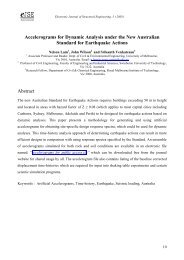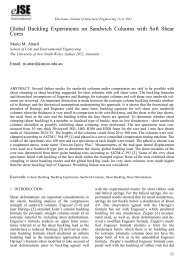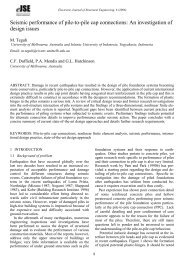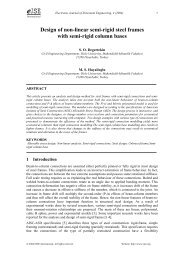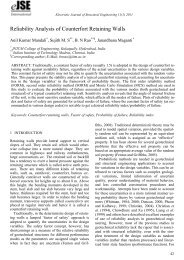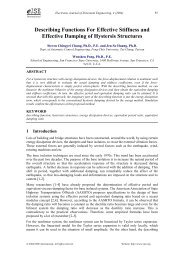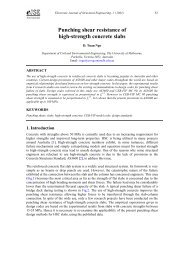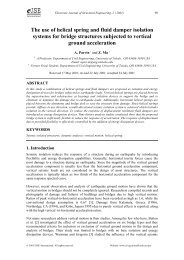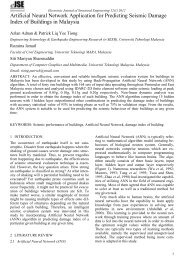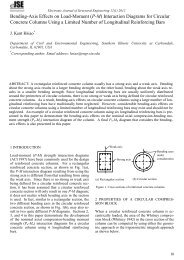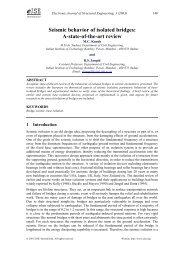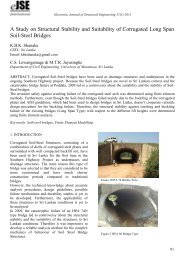You also want an ePaper? Increase the reach of your titles
YUMPU automatically turns print PDFs into web optimized ePapers that Google loves.
11. Continue clicking the Right Arrow button to step through the sequence of hinge<br />
formation in the pushover to the last step. Note how the colors of the hinges change as the<br />
pushover proceeds.<br />
Note: To change the color coding for the hinges, From the Options<br />
menu, select Colors, and then select the Output tab. The colorcoding<br />
for the pushover hinge state is controlled by the colors in<br />
the area labeled Contours. There are ten contour colors; these<br />
contour colors also are used in displaying stress contours for shell<br />
elements. Assume the color in the top box, next to the label<br />
“Min”, is designated “Box 1”, and the color in the bottom box,<br />
next to the label “Max”, is designated “Box 10”. Then the color<br />
coding for pushover hinge states is as defined in the table.<br />
Point Color Box<br />
B Box 2<br />
IO Box 3<br />
LS Box 4<br />
CP Box 5<br />
C Box 6<br />
D Box 7<br />
E Box 8<br />
12. At the last pushover step right click one of the roof level joints to see its displacement. It will<br />
be about 0.96 feet which is consistent with the displacement goal for the PUSH2 pushover<br />
load case.<br />
13. Click the Start Animation button , located in the status bar at the bottom<br />
of the <strong>SAP2000</strong> window, to animate the deformed shape at the last step. When done viewing<br />
the animation, click the Stop Animation button.<br />
Note: In this instance, the animation is only for the particular load step, not for the<br />
entire pushover. The purpose of the animation is to make the behavior at that<br />
particular load step more apparent. You can create a video of the entire pushover<br />
using the Create Video... option on the File menu, however, this option will not be<br />
available in the <strong>SAP2000</strong> 6.20 Beta version.<br />
14. Click the Display Static Deformed Shape button , or from the Display menu select<br />
Show Deformed Shape... to display the Deformed Shape dialog box.<br />
15. In this dialog box:<br />
• Select Push4 Static Push from the Load drop-down box. Recall this is the uniform<br />
acceleration in the Y-direction.<br />
• Click the OK button.<br />
16. Click the Right Arrow button to step through the entire sequence of hinge formation in<br />
the pushover. You will note that through the sequence of steps the deformation reverses<br />
directions several times. The reason for this is dicussed in the note below.<br />
Note: When a hinge reaches point C on its force-displacement curve (see figure below),<br />
that hinge must begin to drop load. Within the program, the way load is dropped<br />
from a hinge that has reached point C is that the pushover force (base shear) is<br />
reduced until the force in that hinge is consistent with the force at point D. As the<br />
<strong>SAP2000</strong> <strong>Web</strong> <strong>Tutorial</strong> 1 108



